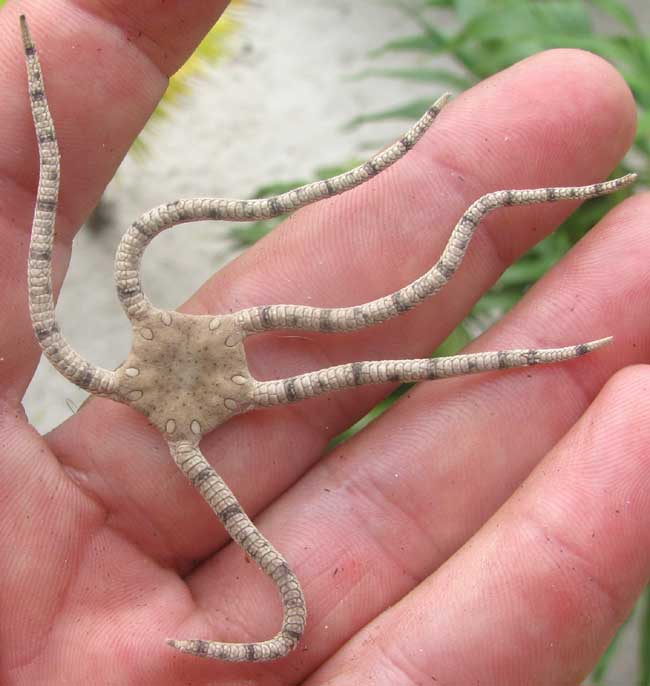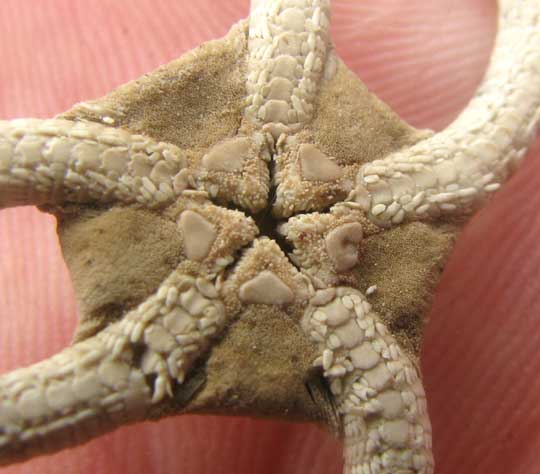Excerpts from Jim Conrad's
NATURALIST Newsletter

from the June 19, 2011 Newsletter issued from Mayan Beach Garden Inn 20 kms north of Mahahual; Caribbean coastal beach and mangroves, ~N18.89°, ~W87.64°, Quintana Roo state, MÉXICO
BRITTLE STAR
One morning Marcia found on her doorstep what's shown above. The creature was dead and dried stiff. She'd seen such a thing before, but in the ocean, as she snorkeled. These little animals are aquatic, so how'd this one get to her door? She's guessing this scenario:
The previous day as she was snorkeling she'd found the colorful shell of a Queen Conch illegally killed within the last day. Its edible body had been cut from the shell. Marcia brought the shell home, and she's betting that the animal in the picture had been hiding in the shell, and fell out upon arrival at the door.
You might guess that the five-armed creature in the picture is closely related to starfish, and that's right, both being echinoderms. What's in the picture is a "brittle star," a common species known by several English names, including Banded-arm and Harlequin Brittle Star, Banded Brittle Starfish, and Serpent Sea Star. It's OPHIODERMA APPRESSUM, one of the most common brittle stars in the Caribbean region.
On the disc's underside was the five-slit opening seen below:

I'd guessed that the above opening was the mouth, but I was only half right. The star-shaped hole serves as both mouth and anus.
This species is nocturnal and does what it can to avoid light, so hiding in a conch shell is about right for it. Marcia says that sometimes brittle stars get inside her bodysuit as she snorkles, apparently seeking dark hiding places. Despite their interesting look, brittle stars disappoint aquarists because as soon as the light is turned on they go hide beneath something. If they're mishandled, their arms shatter.
By the way, how did I know that this brittle star wasn't an octopus? Octopuses are mollusks, not echinoderms, and mollusks -- like their snail and slug cousins -- have rubbery flesh with no interior or exterior skeletons. But this brittle star felt brittle, as it should have, being an echinoderm, for echinoderms have internal skeletons (endoskeletons) right below the skin. Their endoskeletons consist of interconnecting, subepidermal calcareous plates.